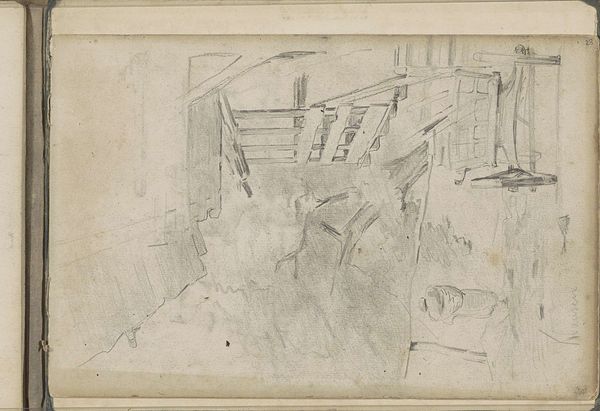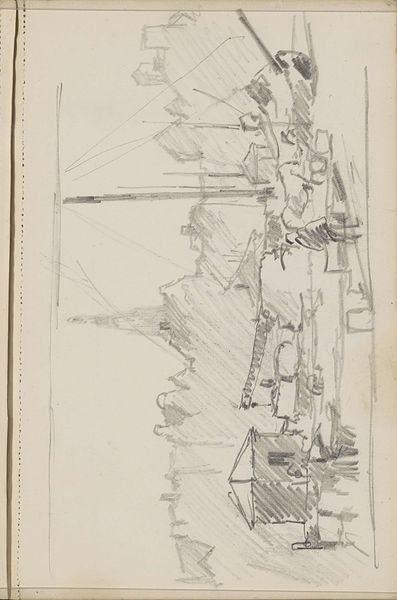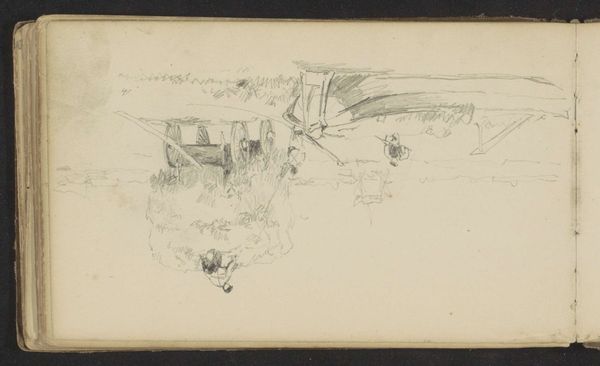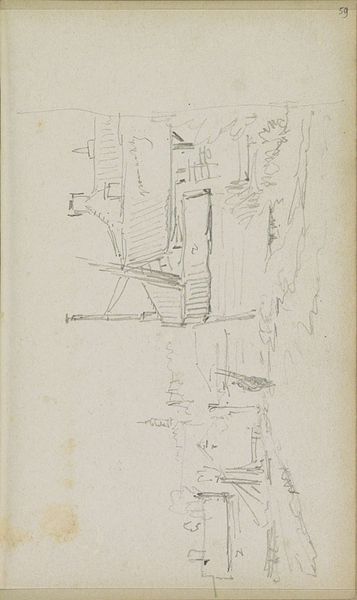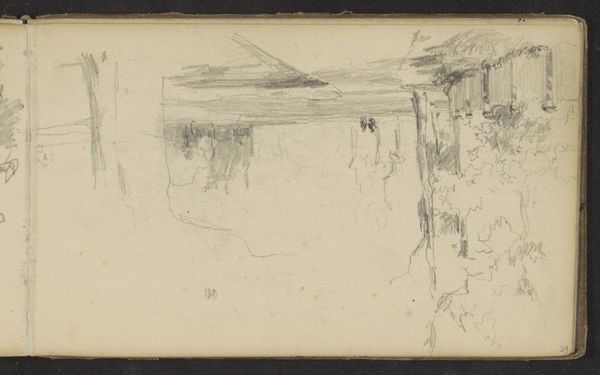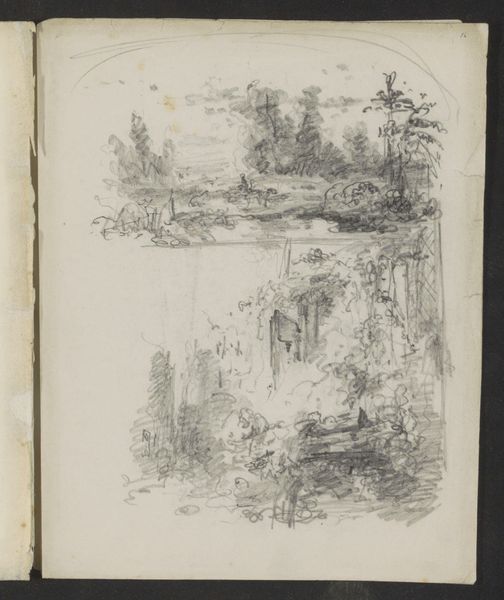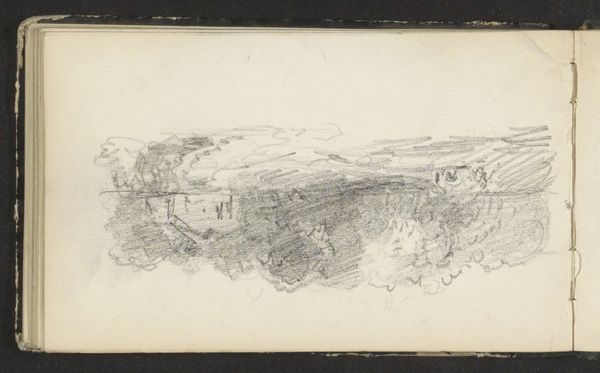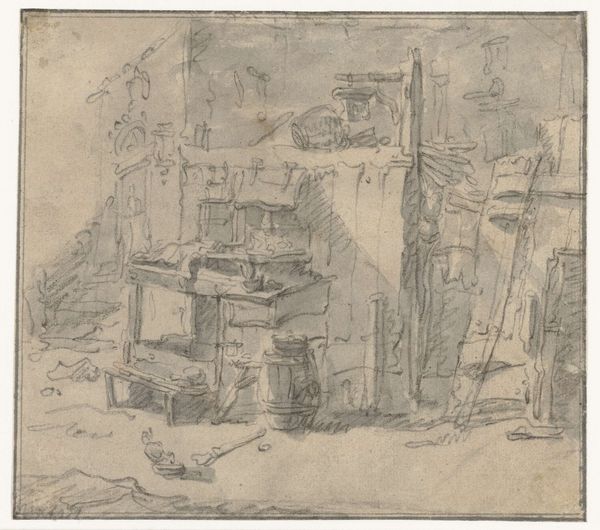
Copyright: Rijks Museum: Open Domain
Curator: Cornelis Springer gifted us this view dating between 1846 and 1882, which can be found right here in the Rijksmuseum. It's titled, "Gezicht op gebouwen aan het water", which translates to "View of Buildings on the Water." What's your first impression? Editor: It has an ephemeral quality; everything feels like it’s about to dissolve into the sepia tones. The sketchiness adds to the sense of something fleeting, a memory perhaps. Curator: Precisely! It's watercolor and ink on paper, almost certainly done en plein air. Note how the buildings mirror on the water surface, rendered so effortlessly by the watercolor. The thinness of the paper support allowed Springer to achieve that hazy, atmospheric effect. This would have been a relatively cheap support material for outdoor sketching. Editor: The reflections feel less about accurate representation and more about invoking a certain mood. Water, throughout history, has often been employed to symbolize reflection, the subconscious, and transition. It’s interesting how Springer utilizes this symbolic language, almost like a liminal space. Curator: Absolutely. Look closer, and you'll appreciate the architectural detailing despite the loose brushstrokes, evidence of careful labor applied. He clearly values representing a sense of place, perhaps for later studio paintings. Consider the growing urbanization of the Netherlands during this time; artists like Springer captured these shifting landscapes. The very act of representing these structures validates their evolving role within society. Editor: Yes, and the sketchy quality evokes a sense of romanticism which gives these common buildings dignity. It also plays with temporality, these could be ancient ruins. The use of brown toned paper creates a strong emotional presence. The incomplete nature even feels very personal, like peering into an artist's sketchbook. Curator: And think about the networks of suppliers who provided artists like Springer with the paper, pigments, and brushes necessary for creating these works. Art production is dependent on those trades and commerce. Editor: It's remarkable how such an unassuming sketch holds layers of emotional depth, cultural meaning and production implications when one considers the context. Curator: Indeed. The material and the symbolic meet. A perfect reminder that art's value stems from both.
Comments
No comments
Be the first to comment and join the conversation on the ultimate creative platform.

